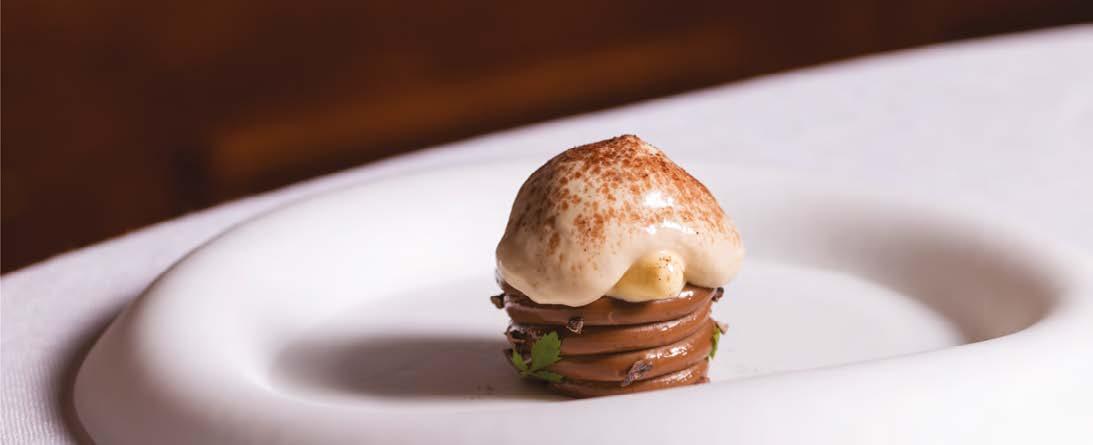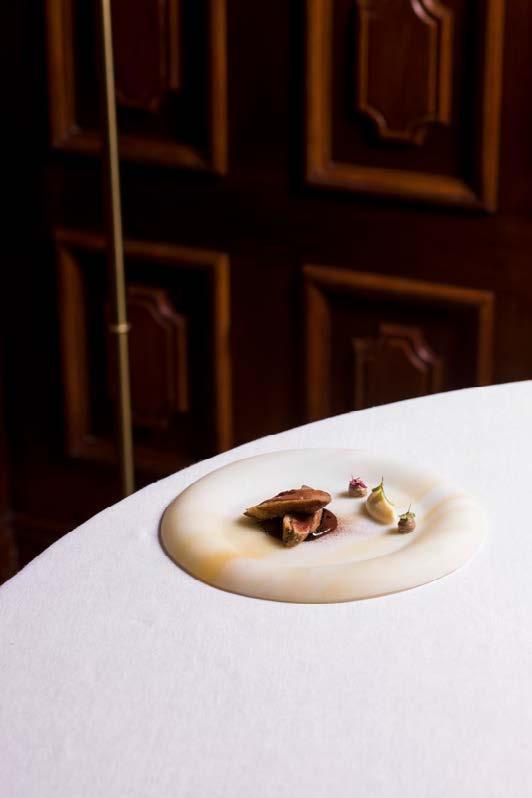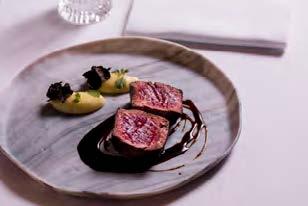
2 minute read
SAUCES AND DRESSINGS FROM THE CANARY ISLANDS: LIFE BEYOND MOJO
Food pantries in the Canaries have always been full of simple, unassuming ingredients but this has not stopped homes and restaurants from bringing out the fullness of tastes in delicious aperitifs and dishes served up with sauces and dressings. These include the stars of the show, the ever-present Canarian mojo sauces –even boiled ones–, although they are by no means the only means of extracting the full nuances of the flavours of the Islands.
Many icons of Canarian gastronomy (pork, goat, parrotfish, tuna …), as well as vegetables, have been served up with sauces, dressings, macerations, marinades and even preserves gleaned from all corners of the world to make unusual fusions that enhance to the full the savoury properties of these special products.
Advertisement
Flavoursome cooking forms the basis of this immersion based on various texts and recipes that pay tribute to these taste-enhancing elaborations, which extend beyond the popular and delicious Canarian mojos.

La Gomera-born chef Juan Carlos Clemente puts the case as follows: «In my opinion, our cuisine is among the tastiest in Spain; we don’t eat better or worse. We just eat differently! That said, as we had rather limited raw materials, an additional effort was needed to enhance those wonderful sensations in meals. That is how dressings and sauces created room for themselves, with the inevitable spicy touch added, and injected life into variants of traditional as well as innovative dishes».
A few years ago, the Tenerife town of Adeje hosted an initiative called «Tastes from memory lane» in which elderly men and women recuperated recipes which had in many cases been used by their grandmothers. Suffice to say that with two or three ingredients at most, they managed to defy the most basic rules of cooking and used safflower, cumin, herbs, spices and chilis to produce the most delicious dishes.
According to Clemente, coriander features prominently in this quest to enhance taste to the full although, contrary to what one might think, it is not used «just with fish, but also red meat, rabbit, goat, baby goat and even a biggish lamb».
Having already established the top rung occupied by mojos, we will leave them for a moment and travel across to El Hierro, which had an interesting way of harnessing plants (medicinal) for various uses on kitchen stoves: sage, wild olive and other wild leaves. Mention should also be made of their use of mushrooms, ferns, pine nuts and pam dates. One of the earliest ways of turning a priori bland food into something more palatable was to use broad beans, which have proven their worth in El Hierro as part of a succulent combination with pork meat –giving rise to the local meat-based dish known as sancocho de habas.
In the Canaries, adobos occupy a central role. They are used to preserve food and also play a vital part of traditional cooking: vinegar –wine vinegar where possible–, peeled and crushed garlic, an onion chopped into quarters and a few bay leaves. What’s more, goat and kid goat just love to be served with garlic sauce and the still-warm lard used to fry the meat; add a little stock and a few drops of vinegar or lemon.
From the appetising simplicity of El Hierro we switch to an example from Fuerteventura, a recipe based on its tuna and magnificent virgin olive oil. Make note of the recipe. Coat the tuna in the oil and leave it to macerate in the fridge for 24 hours; than toast some slices of bread and spread cream of avocado on them. Place the strips of tuna on top and cover them with a paste made with red peppers. To finish off, add a liberal sprinkling of spices and wild herbs.
Un viaje gastronómico a LAS PALMAS DE GRAN CANARIA




Gastronomía

Destino
Tu viaje gastronómico solo acaba de empezar
¡Escanea y descúbrelo!










